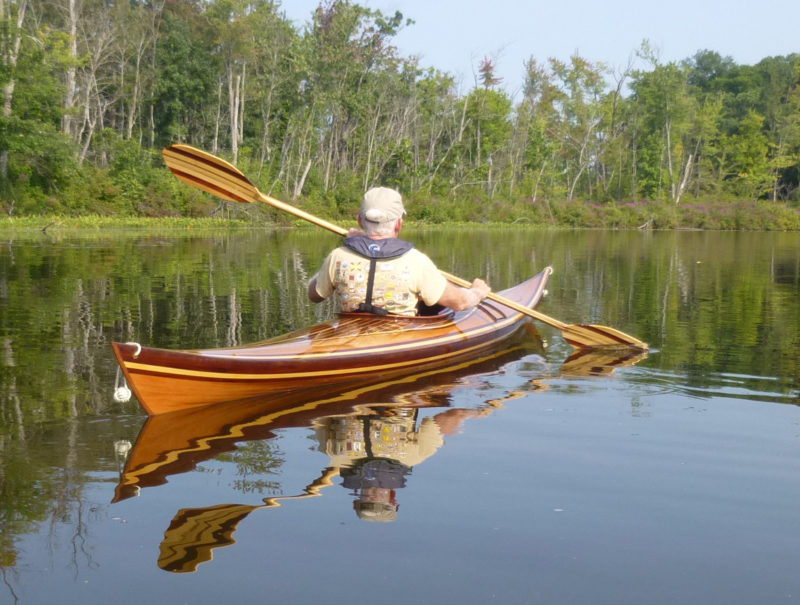 Carol Santoro
Carol SantoroNearly six years in the making, Tom Santoro’s kayak takes to the water near his lakefront home.
Tom Santoro and has wife Carol had a cottage on Blind Lake, one of seven lakes on a chain of lakes in Michigan’s 11,000-acre Pinckney Recreation area, 60 miles west of Detroit. After Tom retired, they rebuilt the cottage as their year-round home. Tom had always enjoyed working with wood, and carved decoys, built wooden model ships and planes, and did simple furniture projects. In 2006, his daughter Amy gave him a copy of Kayaks You Can Build: An Illustrated Guide to Plywood Construction, by Ted Moores and Greg Rössel. It piqued his interest in building something on a larger scale and that he could paddle on Blind Lake.
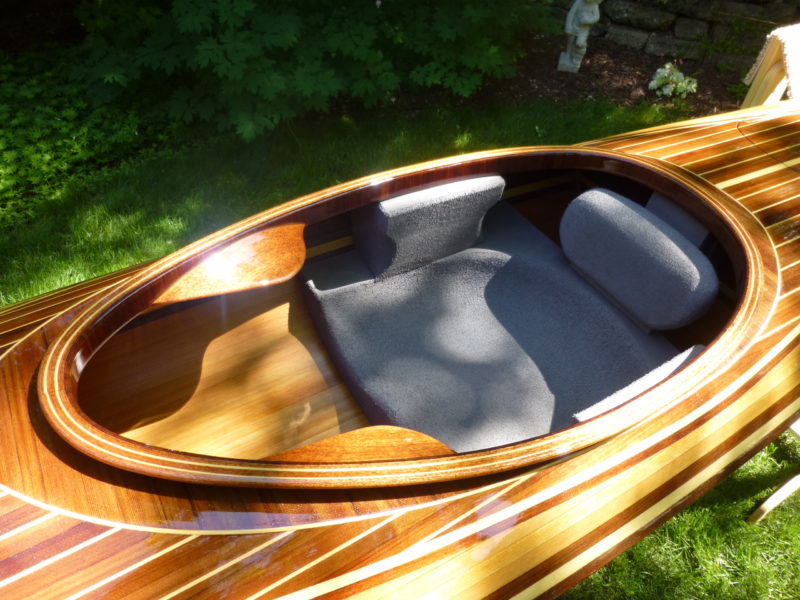 Tom Santoro
Tom SantoroThe cockpit has a custom-fit closed-cell foam seat and sculpted thigh braces.
After some research, Tom purchased a Spring Run kit (the 16’ version) from Joe Greenley of Redfish Kayaks in Port Townsend, Washington. He worked on it mostly in the spring and fall—summer was better spent outdoors, and Michigan winters weren’t practical for building the boat in an unheated garage. During the winter of 2011–12 he had a furnace installed in the garage, and progress picked up. He launched the kayak last summer.
Tom has shown his kayak at three wooden boat shows, two of them juried. In August of last year, it took first place in the Contemporary Replica division at the Les Cheneaux Islands Antique Wooden Boat Show. Held in Hessel, it’s Michigan’s largest wooden boat show. Tom’s kayak also won Best Classic Small Craft at the Boats on the Boardwalk wooden boat show in Traverse City.
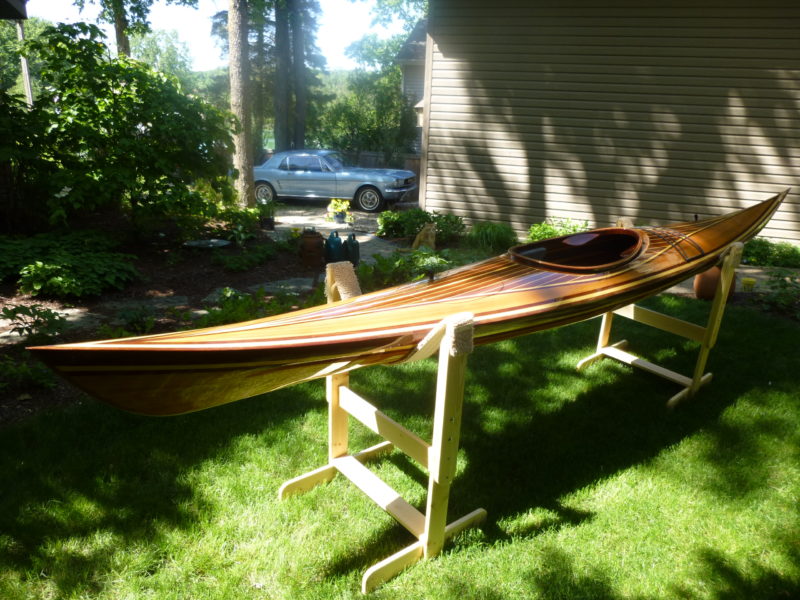 Tom Santoro
Tom SantoroThe hatch covers, held in place by magnets, are almost invisible and have no fittings to detract from the patterns of cedar strips.
Tom chose a kayak with cedar-strip construction because of the beauty of cedar in its many colors and its possibilities for artistic license in the designing a pattern. While he had no experience with epoxy and fiberglass, the woodworking was within his capabilities. He had made strip-built model ships, so moving up to a 16-footer was simply a matter of scale. He built without using staples and eliminated the blemishes they make in the cedar. This slowed the construction process somewhat but paid off in the clean look of the finished kayak.
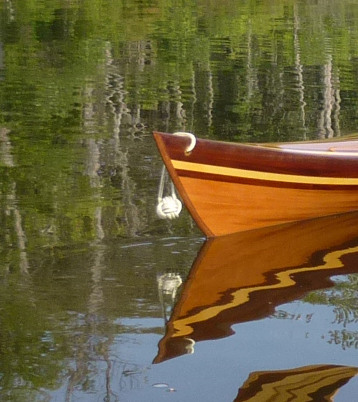
Monkey’s fists serve as grab handles at both ends of the kayak.
Having put so much careful work into the patterned deck, he thought long and hard about cutting hatches into it. Going without hatches would mean he’d lose the benefit of bulkheaded cargo/flotation compartments and gear would have to be stuffed in through the cockpit. After much deliberation, hatches and bulkheads won out. The next major decision was how keep the hatch covers securely in place. He didn’t like the look of hold-down straps, so after some research and advice from Joe Greenley, he chose to use rare-earth magnets with a foam seal. The results were worked well and kept the decks clean look. Monkey-fist knot grab handles added another personal and elegant touch.
Tom and daughter Amy have taken to stand-up paddling. Carol wants a rowboat with a sliding seat, and Tom wants to complete the 3′-long wooden, radio-controlled tugboat that has been set aside for too long. He’ll busy again this winter in his warm garage.![]()
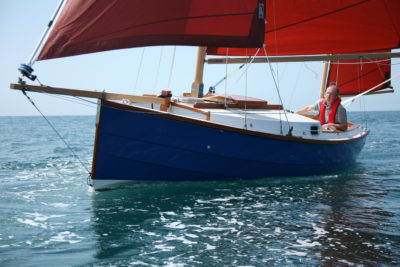
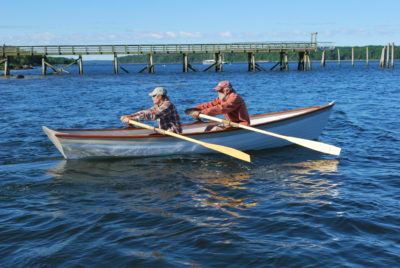
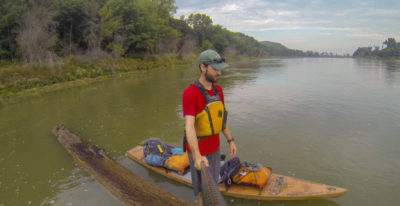
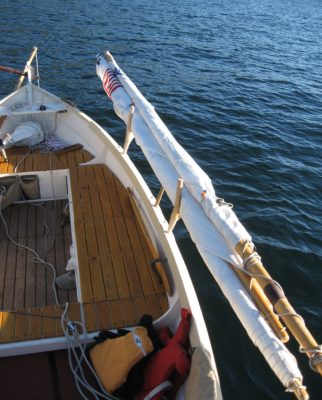
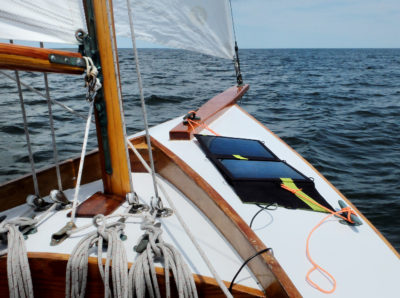
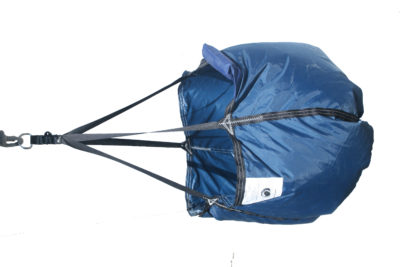
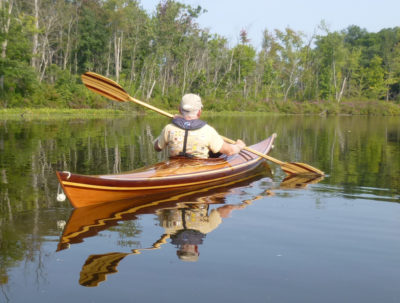
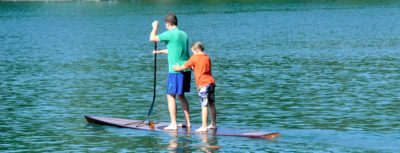
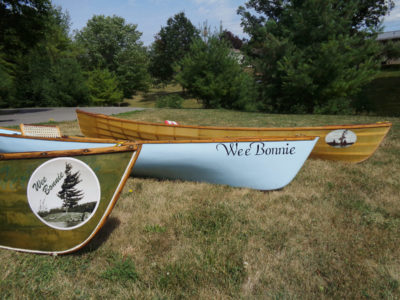
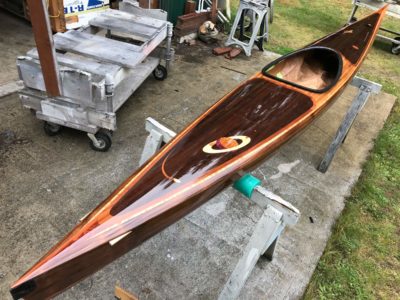
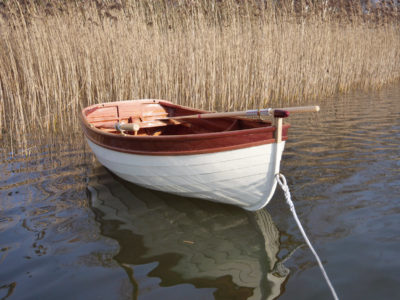
Beautiful job Tom. I can see how you won first place–congrats. I just completed Nick Schade’s fine strip kayak course at Wooden Boat School and plan on building one this winter also.
I assume you taped the strips in place in lieu of staples?
Any chance I could see some detailed photos showing the hatches ?
Also, what are monkey-fist knot grab handles?
Thanks,Pat
I too would like to have more information about the magnetic hatches.
Thanks,
Dale
Take a look at Tom’s photo album. You’ll find what he has to say about staples and magnetic hatches. The Redfish Kayaks web site also has a photo album that includes magnetic hatches. The monkey’s fist handles appear in the opening photo. An enlarged view now appears at the end of the article.
Christopher Cunningham, Editor